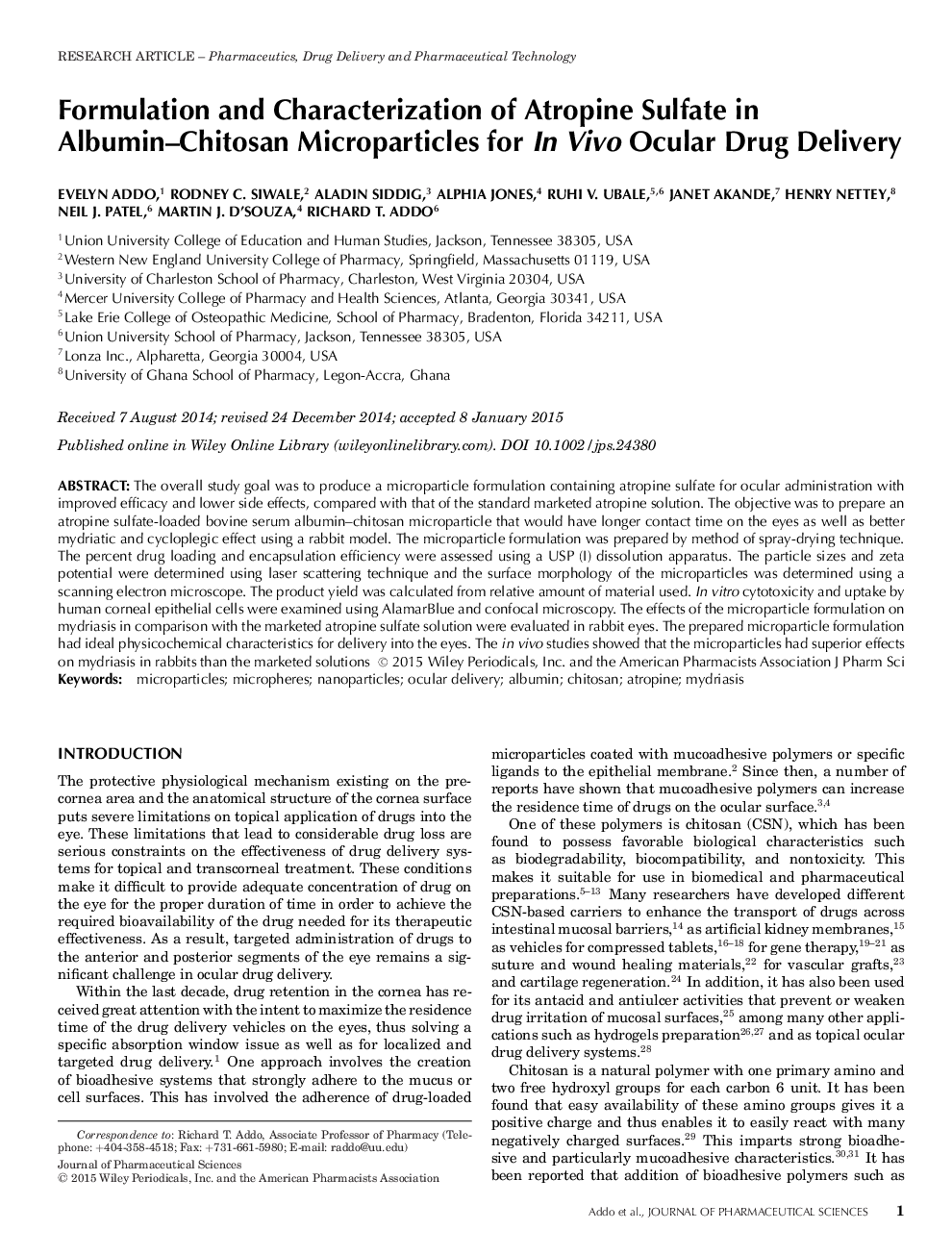| Article ID | Journal | Published Year | Pages | File Type |
|---|---|---|---|---|
| 10162091 | Journal of Pharmaceutical Sciences | 2015 | 14 Pages |
Abstract
The overall study goal was to produce a microparticle formulation containing atropine sulfate for ocular administration with improved efficacy and lower side effects, compared with that of the standard marketed atropine solution. The objective was to prepare an atropine sulfate-loaded bovine serum albumin-chitosan microparticle that would have longer contact time on the eyes as well as better mydriatic and cycloplegic effect using a rabbit model. The microparticle formulation was prepared by method of spray-drying technique. The percent drug loading and encapsulation efficiency were assessed using a USP (I) dissolution apparatus. The particle sizes and zeta potential were determined using laser scattering technique and the surface morphology of the microparticles was determined using a scanning electron microscope. The product yield was calculated from relative amount of material used. In vitro cytotoxicity and uptake by human corneal epithelial cells were examined using AlamarBlue and confocal microscopy. The effects of the microparticle formulation on mydriasis in comparison with the marketed atropine sulfate solution were evaluated in rabbit eyes. The prepared microparticle formulation had ideal physicochemical characteristics for delivery into the eyes. The in vivo studies showed that the microparticles had superior effects on mydriasis in rabbits than the marketed solutions.
Related Topics
Health Sciences
Pharmacology, Toxicology and Pharmaceutical Science
Drug Discovery
Authors
Richard T. Addo, Kwame G. Yeboah, Rodney C. Siwale, Aladin Siddig, Alphia Jones, Ruhi V. Ubale, Janet Akande, Henry Nettey, Neil J. Patel, Evelyn Addo, Martin J. D'Souza,
